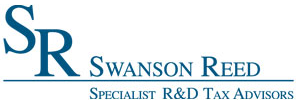South Dakota Patent of the Year – 2024/2025
Synergraze Inc. has been awarded the 2024/2025 Patent of the Year for their innovative approach to enhancing algae metabolism. Their invention, detailed in U.S. Patent No. 12116608, titled ‘Extended metabolism methods for increasing and extracting metabolites from algae and microorganisms’, introduces a novel method to boost the production of valuable compounds from algae and microorganisms.
This patented technique focuses on extending the metabolic activity of algal biomass or enzyme extracts, leading to increased yields of secondary metabolites. These compounds have diverse applications in pharmaceuticals, agriculture, and industrial processes. A key aspect of the invention is the production of antimethanogenic compounds, such as bromoform, which can significantly reduce methane emissions from ruminant animals like cattle and sheep.
By culturing algae in solutions with oil layers and inducing stress conditions, the method triggers the release of these beneficial metabolites. This approach not only enhances the efficiency of metabolite extraction but also contributes to environmental sustainability by mitigating greenhouse gas emissions from livestock.
Synergraze Inc.’s patented technology represents a significant advancement in biotechnological methods, offering a sustainable solution to both agricultural and environmental challenges. The company’s commitment to innovation positions them at the forefront of efforts to create a more sustainable future through scientific ingenuity.
Study Case
Johnson Development is one of America’s largest independently owned property development companies. The company has been a top competitor in the industry since its formation in the 1980’s.
In 2012, Johnson Development conducted a research and development project to develop a community as a sustainable development and overcome site specific technical issues associated with storm water management, water sensitive urban design, a lot design solution for the efficient use of the land and unknown soil conditions.
The goal of Johnson’s R&D project was to investigate, design and test new and improved methodologies and techniques for the sustainable development of the new community site, while overcoming site-specific technical issues.
Johnson Development believed it could achieve the above goals by implementing key research and development activities. To be eligible for the credit, Johnson had to meet the IRS’ Four-Part Test.
Background research to evaluate current knowledge gaps and determine feasibility (background research of improved techniques for sustainable development).
The development of a storm water management system involves the creation of new knowledge around how to manage storm water issues in a manner that is sustainable and environmental. During the scoping process Johnson Development determined that no solution was readily available to manage storm water issues, given the unique characteristics of the site.
Activities during this stage of the project included research and development of new knowledge about how to manage storm water issues on an infill site having regard to the unique characteristics of an infill site, and how to capture and treat storm water in a way that prevents run off into a surrounding creek.
Design and development of a series of prototypes to achieve the technical objectives (design and development of modified sustainability techniques).
Johnson development had to design, develop and implement methodologies for water management including:
-
A storm water management plan, including:
- Assessment of contamination levels due to topsoil erosion;
- Investigations into flora and fauna protection;
- Development of methodology to capture and treat storm water, including water tanks and roadside catchments;
-
A water sensitive urban design plan, including:
- Investigations and development of methodologies to maximize water conservation (and decrease household water consumption) for urban planning, landscape planning and architectural house designs applications of water tanks in the lots;
- Continual monitoring of water levels.
Trials and analysis of data to achieve results that can be reproduced to a satisfactory standard and to test the hypothesis (testing of the new methodologies).
Johnson Development conducted multiple trials, evaluated results and made modifications to the new methodologies as required during this stage until the technical objective was achieved. This included trials and evaluation to determine suitability of soil to build on.
Ongoing analysis of customer or user feedback to improve the prototype design (feedback R&D of the water-quality system).
The feedback was necessary to evaluate the performance capabilities of the new design in the field and to improve any flaws in the design. The feedback activities included:
- Ongoing analysis and testing to improve the efficiency and safety of the project.
- Ongoing development and modification to interpret the experimental results, and draw conclusions that serve as starting points for the development of new hypotheses.
- Commercial analysis and functionality review.
Qualified research consists of research for the intent of developing new or improved business components. A business component is defined as any product, process, technique, invention, formula, or computer software that the taxpayer intends to hold for sale, lease, license, or actual use in the taxpayer’s trade or business.
The Four-Part Test
Activities that are eligible for the R&D Credit are described in the “Four-Part Test” which must be met for the activity to qualify as R&D.
1. Permitted Purpose: The purpose of the activity or project must be to create new (or improve existing) functionality, performance, reliability, or quality of a business component.
2. Elimination of Uncertainty: The taxpayer must intend to discover information that would eliminate uncertainty concerning the development or improvement of the business component. Uncertainty exists if the information available to the taxpayer does not establish the capability of development or improvement, method of development or improvement, or the appropriateness of the business component’s design.
3. Process of Experimentation: The taxpayer must undergo a systematic process designed to evaluate one or more alternatives to achieve a result where the capability or the method of achieving that result, or the appropriate design of that result, is uncertain at the beginning of the taxpayer’s research activities.
4. Technological in Nature: The process of experimentation used to discover information must fundamentally rely on principles of hard science such as physical or biological sciences, chemistry, engineering or computer science.
What records and specific documentation did Johnson Development keep?
Similar to any tax credit or deduction, Johnson Development had to save business records that outlined what it did in its R&D activities, including experimental activities and documents to prove that the work took place in a systematic manner. Johnson Development saved the following documentation:
- Project records/ lab notes
- Innovation Log
- Conceptual sketches
- Design drawings
- Background research
- Testing protocols
- Results of records of analysis from testing/trial runs
- Records of resource allocation/usage logs
- Staff time sheets
- Tax invoices
- Receipts
By having these records on file, Johnson Development confirmed that it was “compliance ready” — meaning if it was audited by the IRS, it could present documentation to show the progression of its R&D work, ultimately proving its R&D eligibility.
Click here to view the PDF version of this case study.
Choose your state


















 […]
[…] […]
[…]
